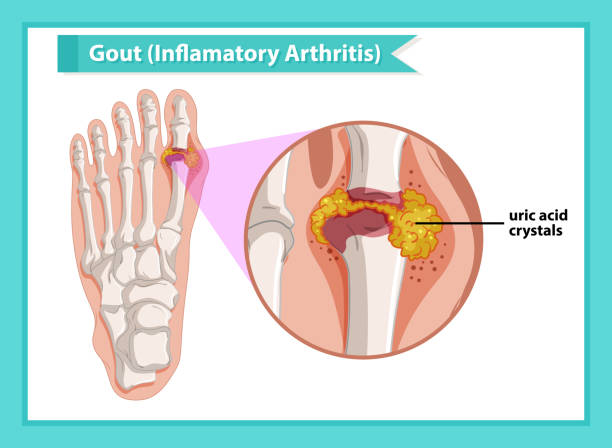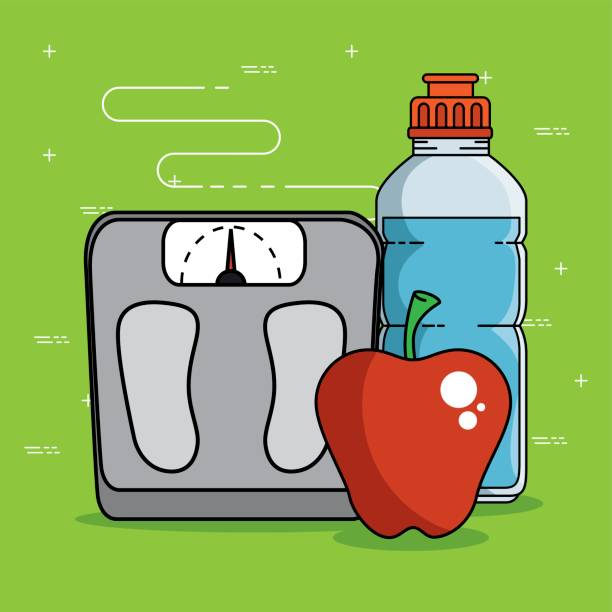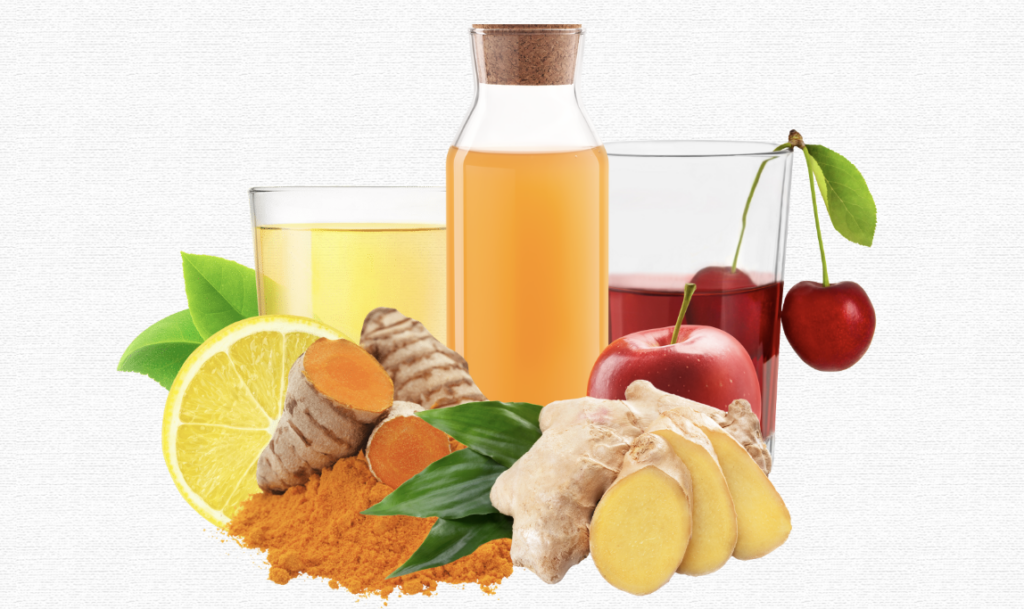Alternative Treatments
Remove Uric Acid Crystals With These Natural Methods
Uric acid crystals, known for their link with illnesses such as gout, can cause excruciating agony and misery in people who are affected. While conventional therapies provide relief, many people seek natural methods to manage uric acid buildup and symptoms rather than relying only on medicine. This article investigates a variety of natural methods for eliminating uric acid crystals from joints, giving information on dietary changes, lifestyle changes, and alternative therapies that may aid in the disintegration and elimination of these crystalline deposits. Individuals can empower themselves to take proactive actions toward joint health and symptom management by investigating the mechanisms underlying uric acid crystal production and examining evidence-based techniques to mitigate their impact.

Understanding Uric Acid and Gout
Gout is a kind of arthritis characterized by the accumulation of uric acid crystals in the joints. Uric acid is a waste product generally excreted by the kidneys. However, if the body creates too much uric acid or the kidneys are unable to clear it correctly, it can build up in the blood and form crystals that deposit in the joints, causing inflammation and pain.
The Role of Diet in Uric Acid Levels
Diet significantly influences uric acid levels and gout. Foods rich in purines, such as red meat, seafood, and organ meats, can raise uric acid levels in the body. Alcohol, particularly beer, can raise uric acid levels. Fructose and sugar-sweetened beverages have also been associated with elevated uric acid levels.
On the other side, a diet high in fruits and vegetables, whole grains, and low-fat dairy products may help lower uric acid levels and lessen the risk of gout.
Identifying Symptoms and Risk Factors
Gout symptoms include acute pain, edema, redness, and warmth in the afflicted joint. This is most commonly associated with the big toe, but it can also affect the ankle, knee, wrist, or fingers.
Gout risk factors include a family history of the ailment, being male, being overweight, having high blood pressure or diabetes, and eating a diet heavy in purines, alcohol, fructose, or sugar-sweetened beverages.
Finally, understanding how nutrition affects uric acid levels, as well as identifying symptoms and risk factors, can aid in the prevention and management of gout. A well-balanced diet and good lifestyle choices can significantly reduce the risk of gout while also improving overall health.

Natural Methods for Lowering Uric Acid Levels
Gout is a kind of arthritis characterized by the buildup of uric acid crystals in the joints. These crystals can cause significant discomfort and swelling, making it difficult to move the affected joint. While pharmaceuticals are available to treat gout, natural methods can also help lower uric acid levels and prevent gout flares.
Hydration and Dietary Adjustments
One of the most important things a gout sufferer can do is stay hydrated. Drinking enough water can help eliminate uric acid from the body, lowering the chance of crystal development in the joints. Additionally, making dietary changes can be useful. Eating a diet high in vegetables and fruits can help lower uric acid levels. Cherries and cherry juice are very good for gout sufferers. Coffee and vitamin C have been demonstrated to lower uric acid levels.
Incorporating Anti-Inflammatory Foods
In addition to dietary changes, including anti-inflammatory items in your diet can be beneficial. Anti-inflammatory foods include ginger, turmeric, and omega-3 fatty acids found in fish. These foods can help reduce inflammation in the body, hence reducing the intensity of gout attacks.
Herbal Supplements and Natural Substances
There are also a variety of herbal medicines and natural ingredients that can help lower uric acid levels. For example, lemon juice has been demonstrated to help neutralize uric acid in the body. Apple cider vinegar, which contains acetic acid, can also help lower uric acid levels. Celery seed extract and nettle tea are two other natural remedies that may help gout sufferers.
Overall, natural therapies can help reduce uric acid levels and avoid gout attacks. Staying hydrated and making dietary changes, including anti-inflammatory foods, as well as taking herbal supplements and natural substances, can help minimize your risk of gout and improve your overall health.

Lifestyle Modifications for Managing Uric Acid
Maintaining uric acid levels is critical for avoiding the production of uric acid crystals in the joints. While medication is often required, lifestyle changes can help lower uric acid levels and prevent gout attacks. Here are some lifestyle changes that can help control uric acid levels naturally.
Weight Management and Exercise
Keeping a healthy weight is essential for controlling uric acid levels. Excess weight can cause elevated levels of uric acid in the blood, increasing the risk of gout episodes. Regular exercise can also aid in uric acid management by encouraging weight loss and boosting insulin sensitivity.
A combination of aerobic and strength-training workouts can help manage uric acid levels. Aerobic exercises, such as brisk walking, jogging, or cycling, can help you burn calories and enhance cardiovascular health. Strength-training exercises like weightlifting and resistance training can help develop muscle, which boosts metabolism and promotes weight loss.
Stress Reduction and Adequate Rest
Stress can cause gout attacks by raising uric acid levels in the bloodstream. As a result, stress-reduction practices like meditation, deep breathing, and yoga can help control uric acid levels and avoid gout attacks.
Adequate rest is also required to manage uric acid levels. Getting adequate sleep can reduce stress and improve overall health. It is advisable to get 7-9 hours of sleep per night.
In conclusion, lifestyle changes such as weight loss, exercise, stress reduction, and proper rest can help control uric acid levels naturally. Individuals with gout who incorporate these changes into their daily routine can minimize their risk of gout attacks while also improving their overall health.

Medical Interventions and When to See a Doctor
While natural therapies can help remove uric acid crystals from joints, there are some cases where medical intervention is required. In these circumstances, it is critical to see a doctor for an accurate diagnosis and treatment.
Medications for Uric Acid Control
There are numerous drugs available to help regulate uric acid levels in the body. This includes:
- Allopurinol works by lowering the body’s production of uric acid. It is usually recommended for those who suffer frequent gout bouts or tophi.
- Febuxostat: Like allopurinol, febuxostat reduces the synthesis of uric acid. It is frequently used for patients who cannot take allopurinol.
- Probenecid: This drug assists the kidneys in eliminating uric acid from the body. It is commonly recommended for those who have a history of kidney stones or who are unable to handle other drugs.
- Colchicine: This drug reduces inflammation and pain caused by gout attacks. It is frequently taken along with other drugs.
- Nonsteroidal anti-inflammatory medicines (NSAIDs) can help lessen the pain and inflammation caused by gout attacks. They are available over the counter or with a prescription.
- Corticosteroids: These drugs can help lessen the inflammation and pain caused by gout attacks. They are available as pills or can be injected directly into the afflicted joint.
Advanced Treatments and Surgery
In some circumstances, sophisticated therapies or surgery may be required to remove uric acid crystals from joints. This can include:
- Extracorporeal shock wave lithotripsy (ESWL): This treatment employs shock waves to dislodge uric acid crystals in the joints. It is frequently used for patients with big tophi that cannot be managed with medicines.
- Joint aspiration: This treatment uses a needle to extract fluid from the afflicted joint. It can help lessen the inflammation and agony caused by gout attacks.
- Surgery: In rare circumstances, surgery may be required to remove tophi or damaged tissue from an affected joint. This may be necessary if other therapies have proven ineffective.
If you have gout symptoms or a history of elevated uric acid levels, you should see your doctor. Based on your specific needs and medical history, your doctor can recommend the best course of therapy for you.
Conclusion
To summarize, while addressing uric acid crystals in joints is a multidimensional task, the study of natural methods offers potential options for people seeking relief from the pain and discomfort associated with illnesses such as gout. Individuals can encourage the breakdown and elimination of uric acid crystals by making dietary changes such as drinking more water, eating anti-inflammatory foods, and avoiding purine-rich foods.
Furthermore, lifestyle changes such as frequent exercise, maintaining a healthy weight, and controlling stress levels can all help to improve joint health and general well-being. Alternative therapies, such as herbal supplements and acupuncture, may support natural methods of relieving symptoms and removing uric acid crystals. While natural methods may not provide immediate relief for everyone, their potential benefits in lowering uric acid crystals deposition and increasing joint function highlight the necessity of a multifaceted approach to controlling uric acid accumulation. Individuals are encouraged to engage with healthcare specialists to create treatment regimens that are tailored to their specific requirements and preferences.
Trusted Health, Wellness, and Medical advice for your well-being


